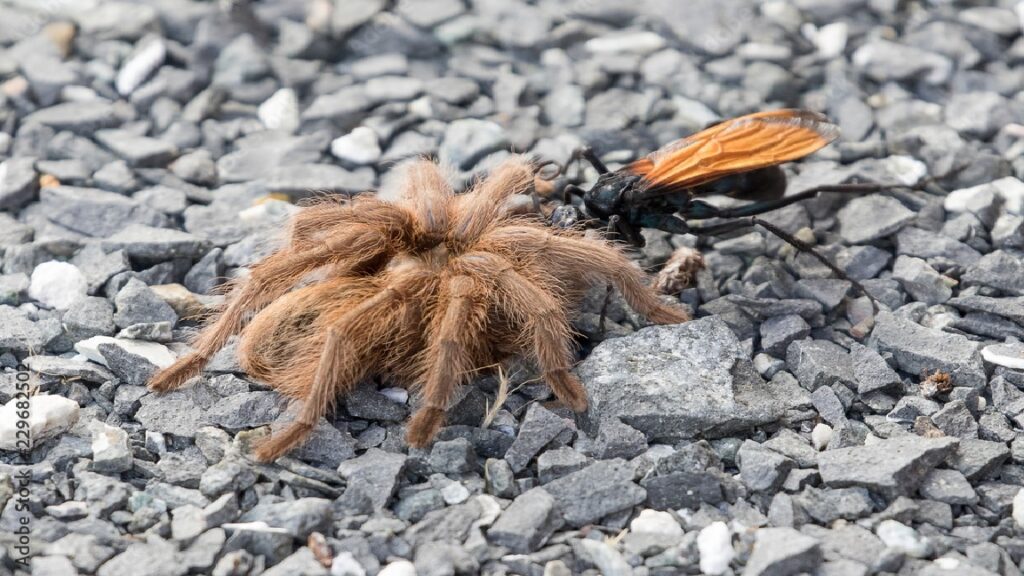Spiders are perhaps the most feared invertebrates on the planet. Their eight long legs seem to move almost as if each of them has a mind of their own rather than belonging to one organism. They appear almost…alien.
Imagine a spider crawling along the leaf litter of a forest, searching for its next meal. It senses something approaching and then suddenly experiences an electrifying sting and cannot move. It is then dragged into a small, dark underground cavity. While still paralyzed, a spider wasp deposits an egg on the spider. Once the egg hatches, the still-living spider will provide nourishment to the spider wasp larva. The larva lives and feeds on the spider until it pupates–a bodily invader. The pupa will later emerge as an adult and the process repeats.
This is the life cycle of the spider wasp, a group of wasps in the family Pompilidae. There are about 300 species of spider wasp in North America. All of them are parasites of spiders with each species normally preferring a subset of spiders to use as their hosts. Spider wasps normally target free-living spiders, those that do not make webs such as wolf spiders and jumping spiders. Perhaps the most well-known group of spider wasps are the Tarantula Hawks which parasitize tarantulas, an impressive feat!
Although spider wasps seem like they are the real-life villain of a horror movie, the adults are not aggressive towards humans. Stings to humans are rare, occurring only when spider wasps feel threatened, and do not cause paralysis. This is good news as the sting is one of the most painful stings in the world! The Schmidt sting pain index was developed to rank the pain of insect stings. Tarantula Hawks have a sting ranking of four while the yellow-jacket wasp ranks at just a two. The only sting more painful is that of the bullet ant which lives in South America.
Although it has a powerful stinger, the adults feed on nectar rather than on spiders. They are actually quite important pollinators and will visit a variety of plants including currants, sunflowers, and foxgloves. Unlike most other wasps, spider wasps are solitary and do not raise young communally or live in colonies. Their appearance varies by species but generally females are larger than males. Only female spider wasps parasitize spiders and each spider supports a single egg and larva. This results in each spider wasp targeting many spiders over her lifetime, potentially making them important predators.
There are dozens of species of spider wasps that occur in the Midwest. One species that occurs in Indiana is the Interrupted Spider Wasp (Poecilopompilus interruptus). The Interrupted Spider Wasp is unlike most spider wasps in that it targets orb-weaving spiders that build webs rather than free-living spiders. It is also unique in that its appearance is highly variable; sometimes it has yellow and brown bands like a Yellow-Jacket while other times it is mostly black with just a splash of orange color.
Now that you know about spider wasps and a bit more about the dangers of being a spider, hopefully your next close encounter of the arachnid kind is less frightening. It is always worth remembering that even if we fear something, we can still respect it and acknowledge that it too has a place in the world.
Thank you for reading and Happy Halloween!
Taylor Lehman is the Stewardship Manager for Red-tail Land Conservancy. She is dedicated to restoring natural areas that support diverse plant and animal communities.




